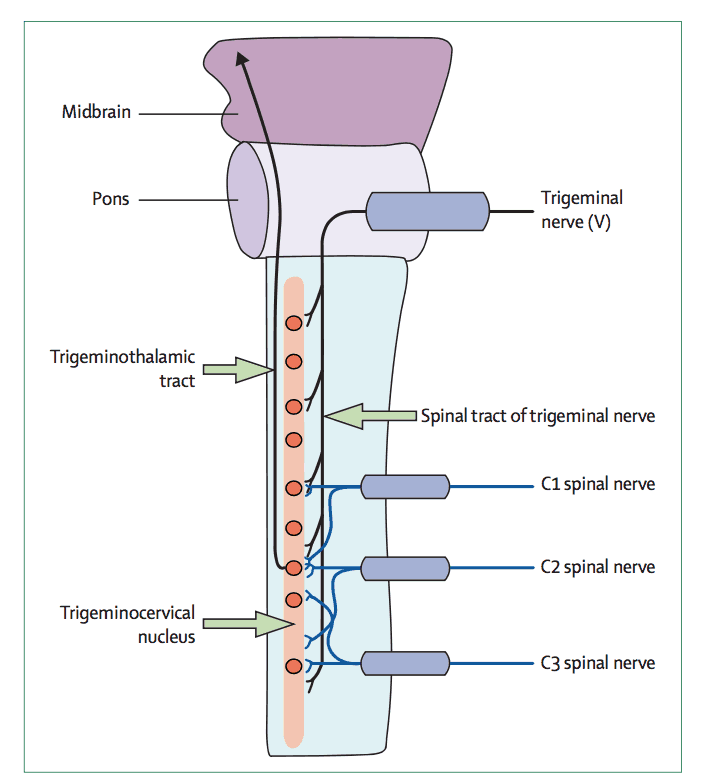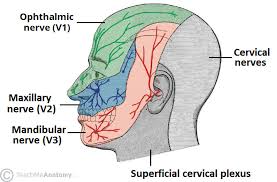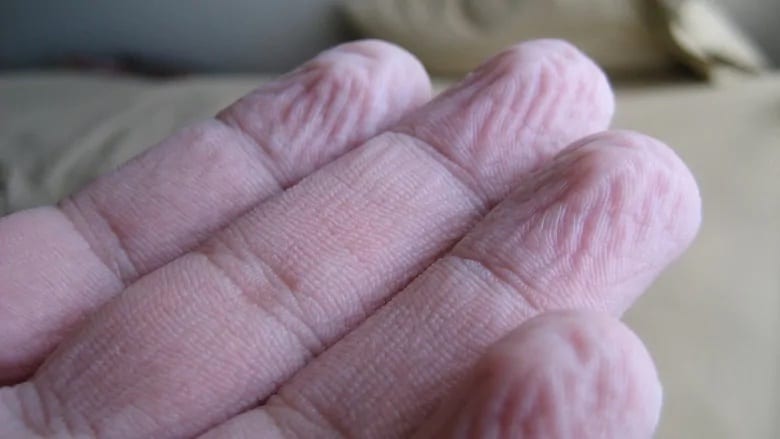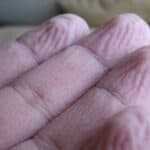Russell Mackenzie has written this blog to explain one of the most important ideas about headaches/migraines that has been discovered recently – the trigeminocervical nucleus.
Understand this idea and you are on the way to understanding how something like a food or a smell or even a normal hormonal cycle can provoke headaches and migraines.
Back in the mid nineties, a group of Australian scientists (Bogduk and team) discovered a structure called the trigeminocervical nucleus. This was a big deal. It was now possible to give an anatomical explanation for what so many people experience with their neck and headaches.
So what is the trigeminocervical nucleus?
The trigeminocervical nucleus is an area in the lower brainstem (in the skull not far above the top of the neck), that receives information from areas that the trigeminal nerve supplies (see diagram) and also receives information from the top three spinal nerves of the neck (spinal nerves of C1, C2 and C3).

There is what is called ‘convergence’ of these inputs.
This gives the neuroanatomical explanation for how ‘danger messages’ (nociception) from upper cervical structures can be felt as pain anywhere in the head.
This includes areas like the forehead, behind the eyes, nose, jaw, and anywhere on the scalp or back of the skull.
Have a look at this diagram. You can easily see that between the trigeminal nerve and the cervical nerve, the entire head is accounted for. The ophthalmic, maxillary and mandibular nerves are branches of the trigeminal nerve.
This diagram shows you the breakdown of which nerves supply which area.

So how does your neck refer pain to the head?
I’m sure you have all experienced referred pain whether you know it or not. This is when the brain assigns the experience of pain to an area that isn’t related to any nociception (danger message production), sometimes at a distance.
One example is the shoulder pain you can get after abdominal surgery that irritates your diaphragm (in this case the phrenic nerve is involved, which is supplied by C3-5 nerve roots, and your shoulder is also supplied by C3-5).
The referred pain occurs because your brain assesses the situation and assigns the area of ‘danger’ (ie the diaphragm) to an area on a virtual map of your body held in the brain.
And sometimes the area that is assigned is incorrect ie abdomen-shoulder.
This kind of mechanism explains how a joint in the neck can reproduce headache or migraine pain when it is stressed – the brain mistakenly assigns the area of ‘danger’.
But this is just part of the story. Next time, I will explain another way that has been proposed to explain headaches and migraines involving the trigeminocervical nucleus.
If you would like to talk to someone about your headache or migraine problem, call us on 8356 1000. Russell would be happy to discuss your situation and see whether he is likely to be able to help you out.
Otherwise, click here to organise a time for a FREE 15 minute scheduled phone call or FREE 15 minute pre-assessment session in the clinic.
For more information on our headache service, click here.














